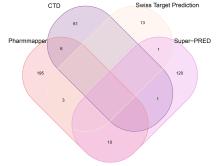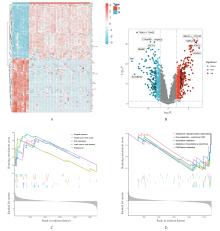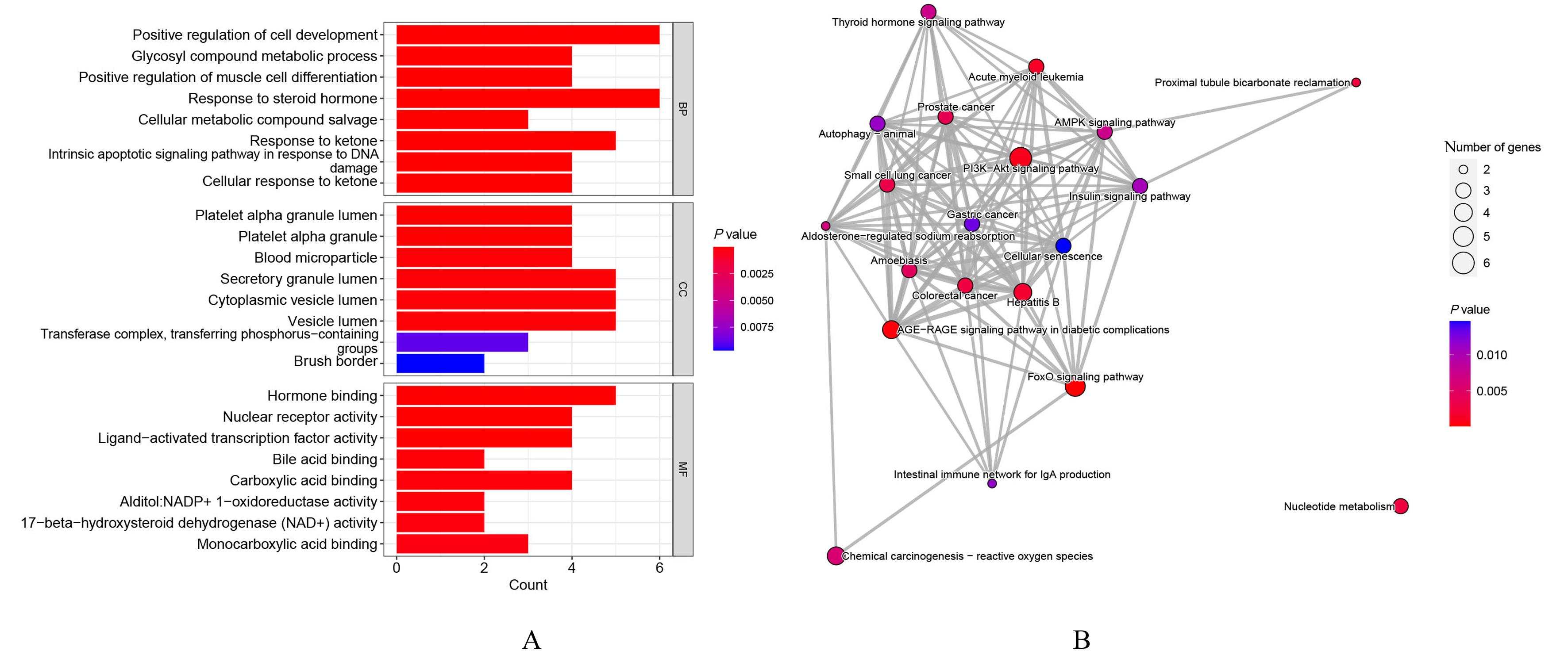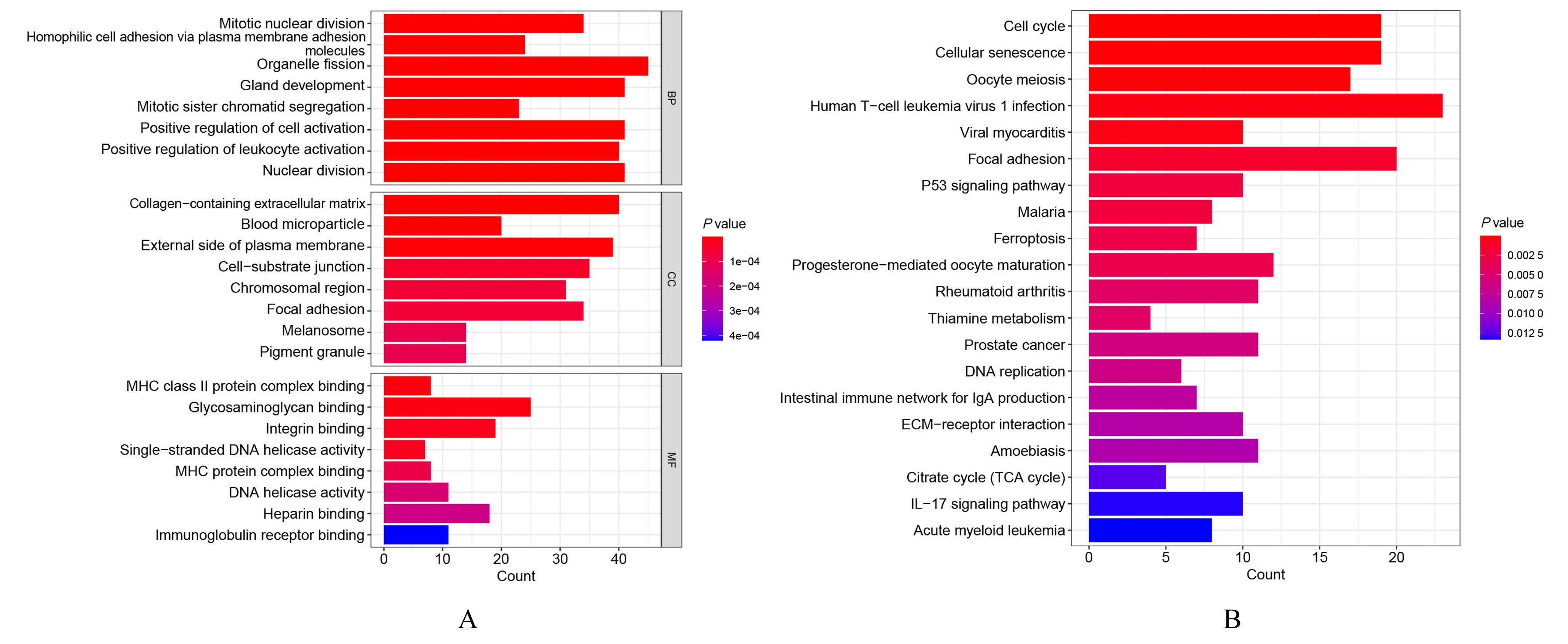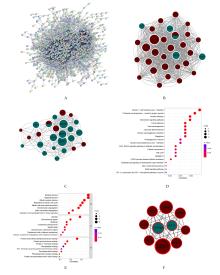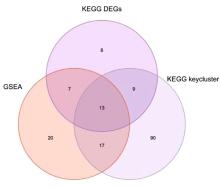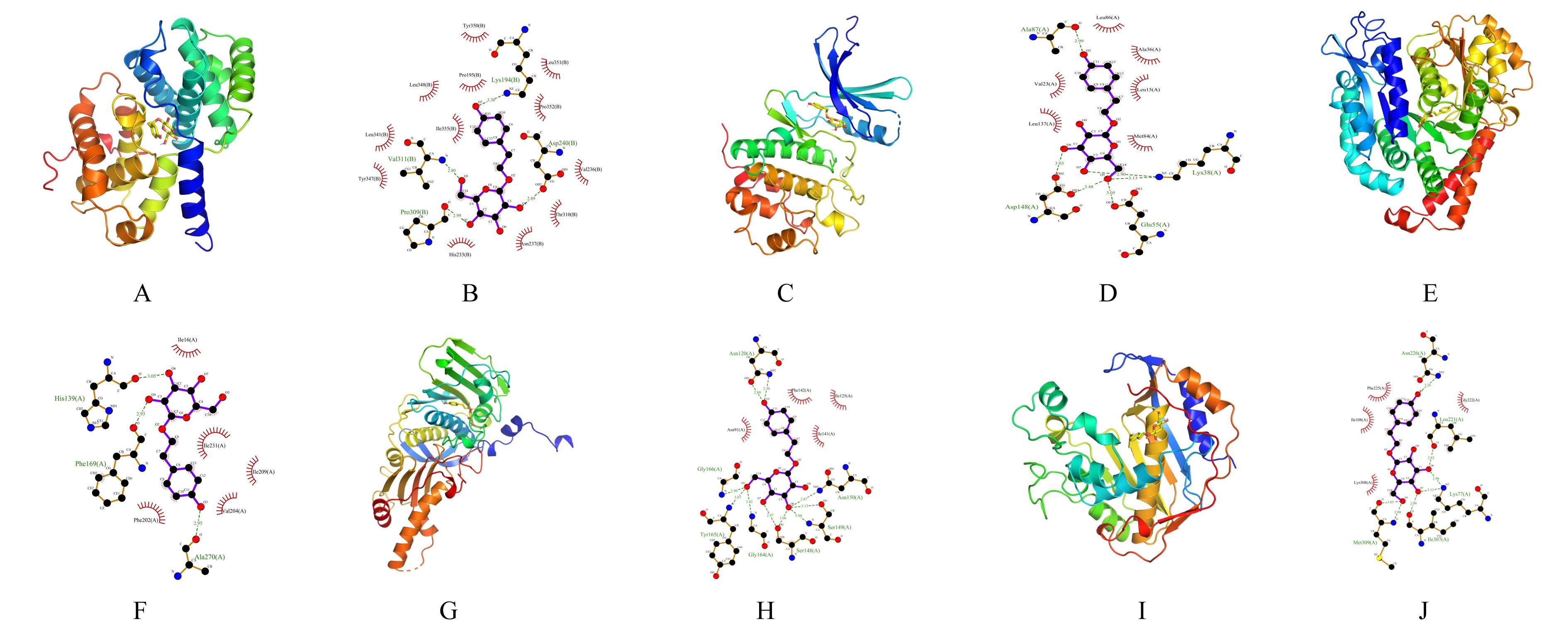| 1 |
李清平, 王心强. 三阴型和非三阴型乳腺癌的临床病理特征及无瘤生存率对比[J]. 中国地方病防治杂志, 2017, 32(3): 342-343.
|
| 2 |
冷茹冰, 张新阁, 周红艳, 等. 不同分子分型乳腺癌的临床病理特征及预后危险因素分析[J]. 临床医学, 2021, 41(5): 8-10.
|
| 3 |
MA W D, WANG Z Y, ZHAO Y, et al. Salidroside suppresses the proliferation and migration of human lung cancer cells through AMPK-dependent NLRP3 inflammasome regulation[J]. Oxid Med Cell Longev, 2021, 2021: 6614574.
|
| 4 |
HU X L, ZHANG X Q, QIU S F, et al. Salidroside induces cell-cycle arrest and apoptosis in human breast cancer cells[J]. Biochem Biophys Res Commun, 2010, 398(1): 62-67.
|
| 5 |
RONG L, LI Z D, LENG X, et al. Salidroside induces apoptosis and protective autophagy in human gastric cancer AGS cells through the PI3K/Akt/mTOR pathway[J]. Biomedecine Pharmacother, 2020, 122: 109726.
|
| 6 |
龚 舒, 段承刚, 陶忠桦, 等. 红景天苷对人乳腺癌MDA-MB-435细胞功能的作用[J]. 泸州医学院学报, 2016, 39(2): 118-123.
|
| 7 |
KANG D Y, SP N, KIM D H, et al. Salidroside inhibits migration, invasion and angiogenesis of MDA‑MB 231 TNBC cells by regulating EGFR/Jak2/STAT3 signaling via MMP2[J]. Int J Oncol, 2018, 53(2): 877-885.
|
| 8 |
SUN A Q, JU X L. Inhibitory effects of salidroside on MCF-7 breast cancer cells in vivo [J]. J Int Med Res, 2020, 48(11): 300060520968353.
|
| 9 |
何思怡, 李 贺, 曹毛毛, 等. 全球及我国女性乳腺癌疾病负担年龄分布及变化趋势[J]. 中国肿瘤, 2023, 32(1): 1-7.
|
| 10 |
LI X X, YANG J, PENG L M, et al. Triple-negative breast cancer has worse overall survival and cause-specific survival than non-triple-negative breast cancer[J].Breast Cancer Res Treat,2017,161(2):279-287.
|
| 11 |
BONOTTO M, GERRATANA L, POLETTO E,et al.Measures of outcome in metastatic breast cancer: insights from a real-world scenario[J]. Oncologist, 2014, 19(6): 608-615.
|
| 12 |
YIN L, DUAN J J, BIAN X W, et al. Triple-negative breast cancer molecular subtyping and treatment progress[J]. Breast Cancer Res, 2020, 22(1): 61.
|
| 13 |
HAHNEN E, LEDERER B, HAUKE J, et al. Germline mutation status, pathological complete response, and disease-free survival in triple-negative breast cancer: secondary analysis of the GeparSixto randomized clinical trial[J]. JAMA Oncol,2017,3(10): 1378-1385.
|
| 14 |
KORNILUK A, KOPER O, KEMONA H, et al. From inflammation to cancer[J]. Ir J Med Sci, 2017, 186(1): 57-62.
|
| 15 |
SILVA CORREIA J D A, MIRANDA Y, AUSTIN-BROWN N, et al. Nod1-dependent control of tumor growth[J]. Proc Natl Acad Sci U S A, 2006, 103(6): 1840-1845.
|
| 16 |
HUANG C K, YANG C Y, JENG Y M, et al. Autocrine/paracrine mechanism of interleukin-17B receptor promotes breast tumorigenesis through NF-κB-mediated antiapoptotic pathway[J]. Oncogene, 2014, 33(23): 2968-2977.
|
| 17 |
GOMES A L, TEIJEIRO A, BURÉN S, et al. Metabolic inflammation-associated IL-17A causes non-alcoholic steatohepatitis and hepatocellular carcinoma[J]. Cancer Cell, 2016, 30(1): 161-175.
|
| 18 |
赵媛媛, 张 楠, 孙维义, 等. 黄芪多糖对祼鼠结直肠癌移植瘤的抑制作用[J].郑州大学学报(医学版),2021,56(3):375-379.
|
| 19 |
SUNADA S, SAITO H, ZHANG D D, et al. CDK1 inhibitor controls G2/M phase transition and reverses DNA damage sensitivity[J]. Biochem Biophys Res Commun, 2021, 550: 56-61.
|
| 20 |
KAPANIDOU M, CURTIS N L, BOLANOS-GARCIA V M. Cdc20: At the crossroads between chromosome segregation and mitotic exit[J]. Trends Biochem Sci, 2017, 42(3): 193-205.
|
| 21 |
MA J L, CHEN C, LIU S, et al. Identification of a five genes prognosis signature for triple-negative breast cancer using multi-omics methods and bioinformatics analysis[J]. Cancer Gene Ther, 2022, 29(11): 1578-1589.
|
| 22 |
GUIDO B C, BRANDÃO D C, BARBOSA A L A,et al.Exploratory comparisons between different anti-mitotics in clinically-used drug combination in triple negative breast cancer[J]. Oncotarget, 2021, 12(19):1920-1936.
|
| 23 |
刘 蕾, 李席如, 胡蕴慧, 等. TOP2A、EGFR基因表达与三阴性乳腺癌TE方案新辅助化疗疗效的相关性[J]. 中华医学杂志, 2016, 96(12): 940-943.
|
| 24 |
WEI L M, LI X Y, WANG Z M, et al. Identification of hub genes in triple-negative breast cancer by integrated bioinformatics analysis[J]. Gland Surg, 2021, 10(2): 799-806.
|
| 25 |
THANKAMONY A P, MURALI R, KARTHIKEYAN N, et al. Targeting the Id1-Kif11 axis in triple-negative breast cancer using combination therapy[J]. Biomolecules, 2020, 10(9): 1295.
|
| 26 |
NOVITASARI D, JENIE R I, KATO J Y, et al. The integrative bioinformatic analysis deciphers the predicted molecular target gene and pathway from curcumin derivative CCA-1.1 against triple-negative breast cancer (TNBC)[J]. J Egypt Natl Canc Inst, 2021, 33(1): 19.
|
 )
)
